news
donor-type recurrence solution
[original]
leukemia recurrence is one of the major causes of failure of hematopoietic stem cell transplantation (allo-hsct). according to the tumor burden during recurrence, it is divided into hematological recurrence, cytogenetics and/or molecular biological recurrence; from the recurrence site, it can be divided into intramedullary recurrence, extramedullary recurrence and intramedullary extramedullary recurrence; according to the source of tumor cells divided into donor-type recurrence and recipient-type recurrence. donor-type recurrence (dcl) is rare. in recent years, with the advancement of detection technology, the number of reported cases has gradually increased. studying donor-type recurrence has important implications for subsequent treatment options, donor selection, and leukemia pathogenesis [1].
donor type recurrence rate and characteristics
the first donor-type recurrence was reported by fialkow et al. in 1971 [2]. the number of cases reported in the literature has gradually increased over the past few years (fig. 1) [3]. there is no definitive statistics on the incidence of donor-type recurrence. the gap is generally considered to account for 5% of cases of recurrence after transplantation [4]. boyd et al reported that it accounted for about 1.2% of hematopoietic stem cell transplantation [4], tokyo umbilical blood bank statistics were 0.84% [5], and the early reports of several transplant centers in china accounted for 1/7 to 1/60 of the number of transplants [6- 8].
figure 1: vendor-type recurrence reported in the literature
the majority of patients with aml, all, and cml were diagnosed at the time of donor recurrence (fig. 2) [3]. there was a certain change in the type of disease after recurrence, mainly aml, all, and mds. the median time for donor-type recurrence after transplantation was 20-29 months. donor age and gender had no effect on donor-type recurrence, while donor-type recurrence was approximately 80% for patients with a relationship [1], mostly for siblings. by statistical analysis of 73 cases of dcl donors in the literature, 62 cases were in a healthy state when the literature was published, 9 cases had hematologic tumors, and 2 cases had non-hematologic tumors [3].
figure 2: statistics of donor type recurrence (left) and recurrence (right) disease types [3]
donor type recurrence detection method
pcr-str – donor chimerism was completely chimeric when relapsed (primary detection method) [1] [9];
karyotype analysis – the chromosome remains the donor karyotype at relapse (primary test method) [1] [9];
hla typing – donor hla genotype at relapse (less reported) [6];
fish – donor chimerism was completely chimeric at relapse.
mainstream studies used pcr-str combined with karyotype analysis to determine whether donor-type recurrence, and hla typing was also useful for patients with non-coordinating transplants to confirm donor-type recurrence.
donor type recurrence mechanism and related research
the mechanism of dcl is still unclear, which may be related to the instability of donor genotype, abnormal microenvironment of bone marrow hematopoietic cells, and the use of a large number of immunosuppressive agents after transplantation and decreased immune surveillance. the donor cell gene itself may have certain defects, and the “second strike” and “multiple strike” suffered after transplantation into the patient lead to canceration of the donor cell [1] [3].
in recent years, with the development of molecular biology technology, articles on the genetic differences of donor cells before and after donor recurrence have been published. it is found that there is at least one consensus gene mutation in dcl donors before and after relapse, indicating that there is inheritance. donors of sexual or acquired genetic variation are more likely to cause dcl [3]. although there are some reports, it is too early to determine whether donor genetic genetic mutation screening is necessary for donor selection. more clinical cases and studies are needed to determine the relationship between genetic variation and donor-type recurrence. with the development of second-generation sequencing technology, the popularity of whole exome sequencing and whole-genome sequencing, future research based on the relationship between gene mutation and donor-type recurrence will have a greater breakthrough.
table 1: summary of donor gene detection for donor-type recurrence (left) and recurrence (right) [3]
donor type recurrence prognosis and treatment
the prognosis of donor-type recurrence was poor. the survival curve of 53 patients in foreign countries is shown in figure 3. the follow-up treatment is mainly chemotherapy and secondary transplantation [1]. domestic reports of patients with short survival time, mostly abandoned treatment [6-8]. a successful case of 5-azacitidine in the treatment of donor recurrence of mds [10].
figure 3: statistics of survival time after confirmation of donor recurrence in 53 patients
cstb donor recurrence solution
clinically, patients will experience hematologic recurrence and the donor chimerism rate is still fully chimeric. in the case of similar cases, first look at the sample type, the bone marrow is sensitive to the periphery, and it is recommended to use bone marrow for tca. if the donor rate of bone marrow specimens is still fully chimeric, consider donor-type recurrence.
cstb donor-type recurrence assay: pcr-str karyotyping (see donor cell ratio at the gene level and chromosome level), the company also provides other detection methods such as fish, hla typing.
cstb donor-type recurrence research program: second-generation sequencing first-generation sequencing digital pcr gene detection program. asus beacon has the most comprehensive ngs sequencing solution for blood system diseases, including full exome sequencing and multiple disease subtypes, blood system disease related genes, and in-depth analysis; in addition to individual or specific genes choose a generation of sequencing to save costs; select digital pcr for individual or specific sites to achieve accurate quantification. customers can select different protocols to sequence the pre-transplant donor and relapse patients for clinically identified donor-type recurrence cases, and to study the molecular mechanisms of tumorigenesis and donor recurrence.
references:
[1] wiseman d h. donor cell leukemia: a review[j]. biology of blood and marrow transplantation, 2011, 17(6): 771-789.
[2] fialkow p j, bryant j i, thomas e d, et al. leukaemic transformation of engrafted human marrow cells in vivo [j]. the lancet, 1971, 297(7693): 251-255.
[3] suárez-gonzález j, martínez-laperche c, kwon m, et al. donor cell–derived hematologic neoplasms after hematopoietic stem cell transplantation: a systematic review[j]. biology of blood and marrow transplantation, 2018, 24(7 ): 1505-1513.
[4] boyd c n, ramberg r c, thomas e d. the incidence of recurrence of leukemia in donor cells after allogeneic bone marrow transplantation [j]. leukemia research, 1982, 6(6): 833-837.
[5] nagamura-inoue t, kodo h, takahashi ta, et al. four cases of donor cell-derived aml following unrelated cord blood transplantation for adult patients: experiences of the tokyo cord blood bank [j]. cytotherapy, 2007, 9 (8): 727-728.
[6] liu jing, wang hengxiang, ji shuzhen, et al. recurrence of donor leukemia after haploidentical bone marrow transplantation[j]. journal of clinical hematology, 2006, 19(4): 198-200.
[7] zhu ling, wang hengxiang, liu jing, et al. two cases of donor recurrence after hla half-fold bone marrow transplantation in patients with acute leukemia [d]. , 2006.
[8] xiao guangfen, chen wei, huang xilian, et al. donor type recurrence after allogeneic hematopoietic stem cell transplantation and literature review [d]., 2005.
[9] xiao h, shi j, luo y, et al. first report of multiple cebpa mutations contributing to donor origin of leukemia relapse after allogeneic hematopoietic stem cell transplantation[j]. blood, 2011, 117(19): 5257-5260 .
[10] jennane s, el haddad m, mahtat e m, et al. successful treatment of donor cell derived myelodysplastic syndrome with 5-azacytidine[c]//annales de biologie clinique. 2017, 75(6): 713.
(all the contents of this website are marked as “original”, all of which are originals of becky beacon. the 尊龙凯时 copyrights are owned by becky beacon. any media, website or individual may not be reproduced without authorization. otherwise, legal liability will be pursued. must indicate “source: aussie beacon official website.” this website indicates that the source is the content of other media is reproduced, reproduced only for opinion sharing, the 尊龙凯时 copyright belongs to the original author, if there is 尊龙凯时 copyright infringement, please contact us in time.)
- clinical service
- clinical cell molecular genetics test
- clinical blood and body fluid testing
- service overview
- knowledge center
- technology latform
- sequencing platform
- diagnostic platform
- computing and data platform
- sample storage platform
- research and technology solutions
- blood disease
- epilepsy medication guidance
- whole genome
- research cooperation
- technical team
- biological reagent
- class a medical device
- class iii medical devices
- contact us
- contact us
- cstb life
- careers
- links
shenzhen headquarters
address: building a17, life science industrial park, kwai chung street, dapeng new district, shenzhenshanghai headquarters
address: building 21, phase 4, shanghai international medical parknational hotline:400-808-7208
scan on us
©尊龙凯时 copyright shenzhen tissue bank precision medicine co., ltd. 尊龙凯时 copyright

